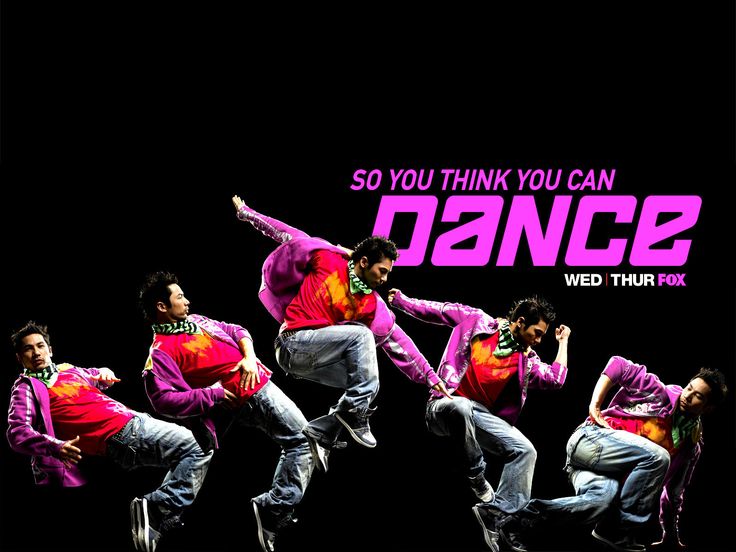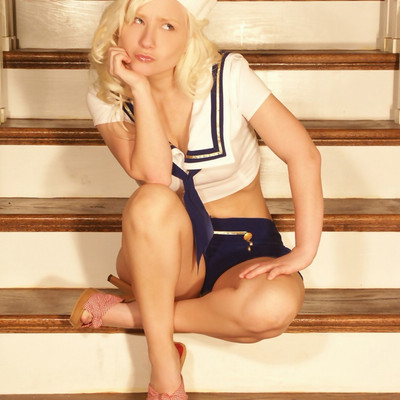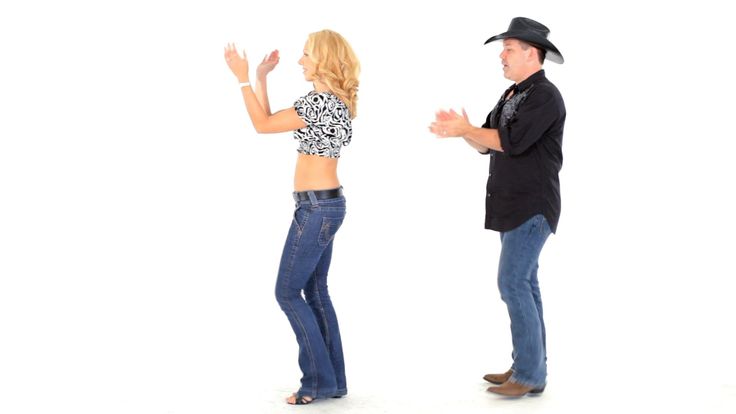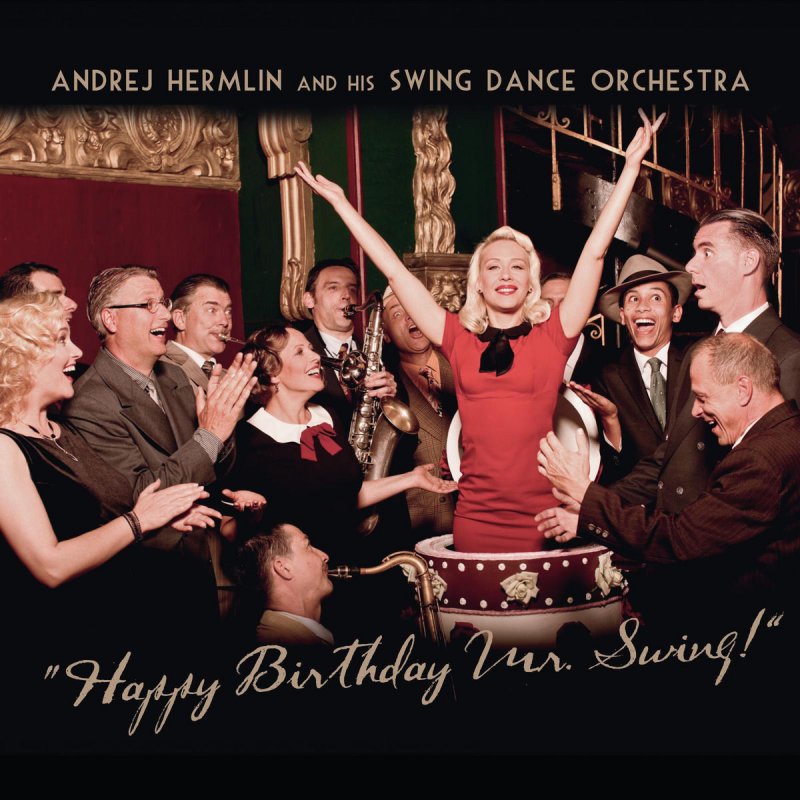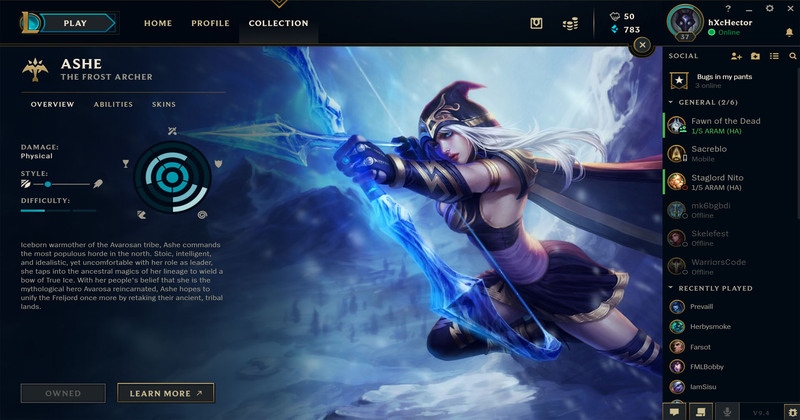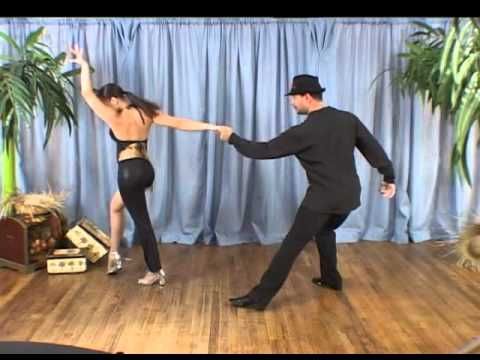How to do sick dance moves
How To Dance Hip Hop For Beginners
So, you want to learn how to dance Hip Hop! You’ve come to the right place.
*Note: The term "Hip Hop" is more accurately described in this article: What Is Hip Hop Dance?
For the sake of continuity, we will refer to it as Hip Hop Dance in this article.
You will learn everything you need to learn how to dance Hip Hop, from understanding music to where to find a Hip Hop dance class in your community. Ready to learn how to dance Hip Hop? Let’s get moving.
Part 1: Musicality
What is dance musicality? Why is it important in learning Hip Hop dance? Dance musicality is how dancers hear, interpret, and dance to music. It sets the tone for our movements and gives sounds to follow.
But, in order to start leaning about music and how we dance to it, the first step is learning how to count music itself.
What is an 8-count?
We use an 8-count to break down the structure of music. It's sort of like a map to know when you do a certain move. For example, if a choreographer says that a move should be executed on "the 5," you're going to count the beats of the music like this: "One, two, three, four, MOVE."
Try this:
Listen to a song, any song, and try counting in your head – "One, two, three, four, five, six, seven, eight." Match your counts to the beat of the song – this is what you'd naturally bob your head or clap your hands to.
Follow along with this video for some practice, and a further breakdown of all the moments that you can hit within an 8-count.
Different musical elements of a song
*We're not going into every single sound found in the history of music! Just the basics, so as not to overwhelm or overcomplicate.
Lyrics
The words that the singer is singing! The lyrics are probably the easiest to distinguish, but hardest to count/dance to, since vocals don't always match the strict structure of 8-counts. Sometimes, choreographers will make moves that correlate with the lyrics by miming actions that match what they singer is talking about.
BassThe bass is the lowest of the standard four voice ranges (bass, tenor, alto, soprano), or, the lowest sound in a musical composition – its there to support the melody. Different instruments can produce a bass sound (most often drums or bass guitars). Dancers often use the onomatopoeia "boom" to describe a bass sound, and we tend to associate bass sounds with strong, grounded movements like a foot stomp or a Woah.
SnareIt's the sharp, staccato drum sound you hear in most Hip Hop songs, kinda like the sound you make when you snap a rubber band. Dancers often describe a snare as a "ka!" when they talk about their routine. Dancers usually do quick, sharp movements to match this sound. Think of how a dancer might suddenly shoot their arm to the side and snap their fingers, or quickly turn their head to look at the audience.
Dancers usually do quick, sharp movements to match this sound. Think of how a dancer might suddenly shoot their arm to the side and snap their fingers, or quickly turn their head to look at the audience.
A hi-hat is produced by a hi- hat cymbal. Dancers often describe this sound as "tss tss" sound. Hi-Hats are usually paired with sharp movements, but they might melt into something groovier if the sound of the cymbal creates a reverb-y echo. Think of how a dancer might pop their chest right when the hi-hat is struck, and then might add a couple smaller pops right after the first one to mimic the way a hi-hat echoes.
SynthA sound synthesizer produces electric signals converted to sound through amps and loudspeakers. A common type of synth is the synth piano, which may sound like a long, slow bass – a"wobba wobba" sound. This sound goes great with a gooeyyy movement – you want to mimic the way the sound is rippling by using resistance and waves in your movement. A dancer might do this by rolling their chest slowly to a synth.
A dancer might do this by rolling their chest slowly to a synth.
Guitar strums and melodies are also useful to take note of, for more instrumental / acoustic songs. You can do whatever feels right in the moment to these types of songs!
Keyboard/PianoThe piano sounds will also accent, or set the melody/harmony of the song. You can dance to these sounds separately or as chords. If you hear a high-pitched piano note over and over, you might hit that note with an upper-body-focused little move. If you hear a rich set of chords, you might do some flowy, full-body moves to communicate how rich those sounds are.
Try this:
You'll start to see patterns when you listen to music more carefully. Maybe there's a bass drum on each 1st and 5th count, or a snare on every even count. As you're clapping or bouncing or whatever you're doing to mark the beats in the music, take notice of the sound patterns that exist within it.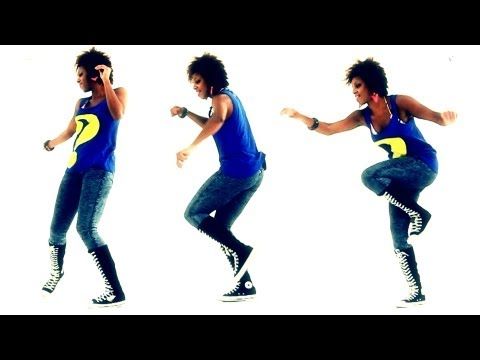 It'll cue you in to the musicality you should use when you dance.
It'll cue you in to the musicality you should use when you dance.
What does Hip Hop dance musicality look like?
Dance musicality is demonstrated in several ways, depending on the dancer's style, the song, and how they choose to interpret the music.
Check out these 2 pieces to the same song, that are completely different in both style of dance and musicality choice.
How Many Drinks – Pat Cruz & Aggie Loyola
How Many Drinks – Carlo Darang
Everyone listens to music differently, as you can probably tell from these two pieces. Choreographers utilize different pictures and textures to portray how they hear the song.
Not sure what textures are? Read this: What Are Textures In Dancing?
Great choreographers have unique ways of moving to music that bring out sounds you might not have heard when you’re just listening to the song.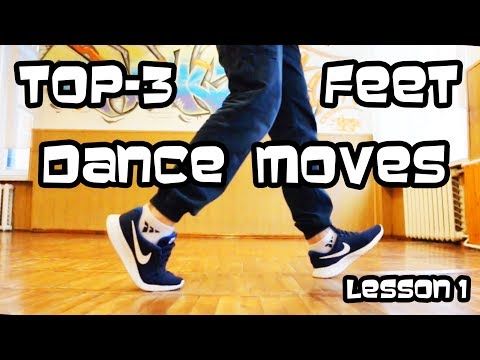 Now you know what it means when someone says. “UGHHH, their musicality is so sick!” By being more familiar with the different sounds that make up a song and their relationship to the flow of it, you'll have a better understanding of how to execute moves to embody those sounds more closely.
Now you know what it means when someone says. “UGHHH, their musicality is so sick!” By being more familiar with the different sounds that make up a song and their relationship to the flow of it, you'll have a better understanding of how to execute moves to embody those sounds more closely.
This dance tip is from Scott Forsyth's class on STEEZY Studio!
Part 2: Body Awareness
Have you ever taken a yoga class? Then you'll know that a big objective of yoga is simply to be present – in the mind, and the body. By doing so, you're bringing together your mental and physical selves. Similarly, as a dancer, your mind and body must be working together – your mind is the part that understands the music and the intent behind the movement, and your body is the actual tool for moving.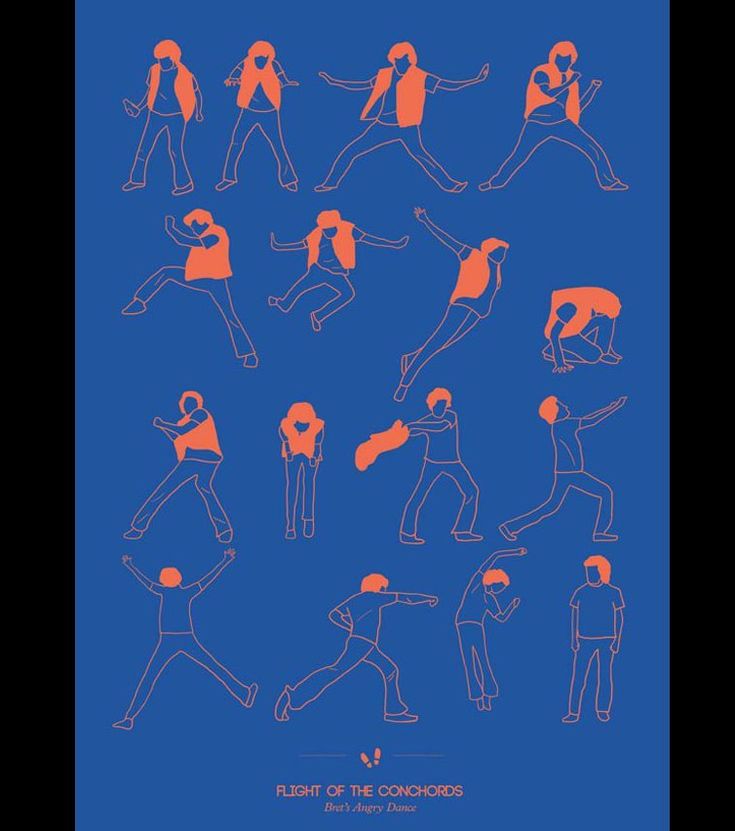 Here are ways to train your body to learn to dance Hip Hop.
Here are ways to train your body to learn to dance Hip Hop.
Lay on the floor, and close your eyes. (Turn on some light music here, if you want.)
Then, go through this list of body parts, and focus your thoughts and feelings on each one. Flex or move the part to draw more attention to it. Once you feel fully comfortable with where it is and what it feels like, move on to the next one.
Arms
Shoulder
Forearm
Wrist
Fingers
Fingertips
Legs
Thigh
Knees
Calves
Ankles
Feet
Toes
Hips (Try rotating them in and out)
Chest
Upper chest
Core (tummy area)
Lower abdomen
Neck (Try turning your neck, and also rolling it clock- and counter-clockwise)
It sounds almost too easy to be effective – but the key here is not the difficulty of the movement (which is obviously very minimal). The key is how familiar you're becoming with these body parts, which requires a surprisingly great deal of focus.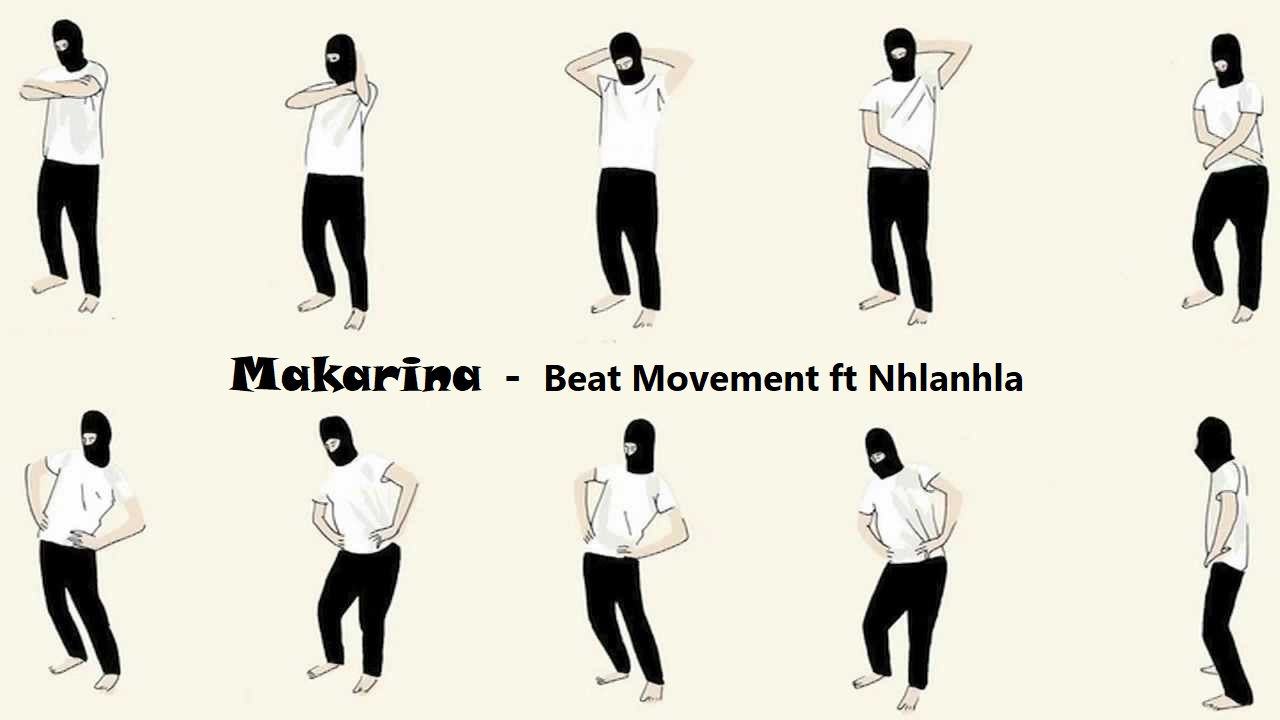 Muscle memory starts with muscle awareness! By dedicating your time and energy in getting to know your body, you're training your most important tool as a dancer!
Muscle memory starts with muscle awareness! By dedicating your time and energy in getting to know your body, you're training your most important tool as a dancer!
Cool, so we're getting to know what each part of the body feels like in a resting position. Let's create some pictures to explore how our bodies look and feel in certain placements. We'll be using 3 main ideas for these exercises:
- Focus
- Posture
- Angles
What "focus" refers to in dance is the direction your face is facing. Timed right with a committed facial, your focus has the power to make or break a piece.
Whatever pose you're holding or pathway you're moving through, your focus is most commonly straight to the mirror (not the greatest habit, but it's good to watch yourself at first, when developing body awareness), to the right, to the left, up, down – and to varying degrees.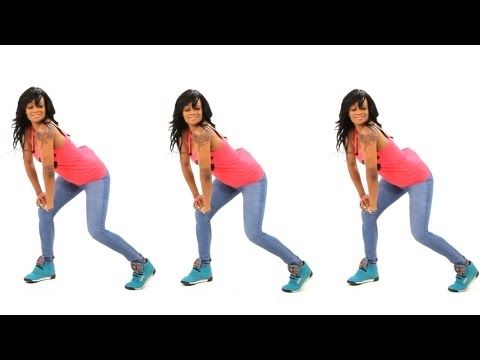
For example, "right 45" can refer to turning your face toward the right, but only halfway from directly ahead and your right side. "Down left 45" signals looking slightly toward the left, with your chin pointed down, so that your eyes are aimed at the bottom corner of the wall. Focus changes will flow naturally as you learn choreography, but sometimes the choreographer will specify certain pictures and combos to have a certain focus.
This dance tip is from Jeffrey Caluag's class on STEEZY Studio!
Try this:Stretch your neck to the rhythm of a song, by looking to the
- right, left, right left, ↔ then switch to
- up, down, up, down
- then hit the diagonals! ⤢⤡
- then roll your neck around so your eyes are making a big circle ⤿ and switch directions ⤾
Posture has a lot to do with the style or mood of the piece.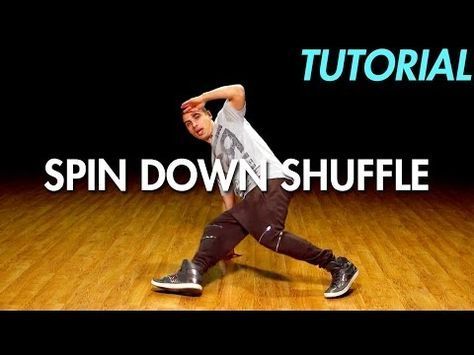
For example, Whacking will call for your chest to be more open, and your focuses will be sharp and purposeful. In a more swaggy, laidback-feeling piece, your posture might be directed more toward the ground, with a relaxed torso and shoulders. Think of posture as huge part of your body language that communicates tone and mood.
Melvin Timtim explains how he channels Lil Wayne through his posture in this STEEZY Studio class.
Watch it in action here:
PicturesBefore getting into full-body movement, let's study how your body feels when hitting certain angles. When you break down the movements of Hip Hop dance, you will see certain stops in the movement, or pictures.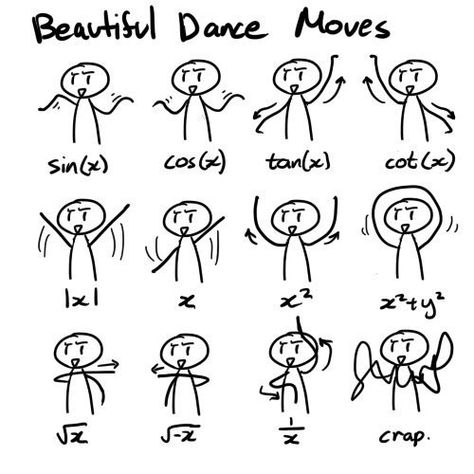
Practice creating different pictures in the mirror, and pay attention to how they make you feel.
Do you feel powerful when your legs are apart and your hands are on your hips?
Do you feel weak when your hunch your shoulders and point your knees inward?
Part 3: Execution of movement
Grooving!!!!
Chances are, you probably already know how to dance. When you go to a club, or listen to music on the radio, do you bob your head or sway side to side? These are grooves – which is the foundation for Hip Hop dance and Open Style choreography. Hip Hop Dance grooves were invented by people who were dancing at clubs and parties to just vibe out with each other.
Bianca Vallar explains the importance of learning your fundamental Hip Hop moves here:
Practicing grooves are KEY to not looking awkward when you dance.
(But there are more tips here: How To Not Look AWKWARD When You Dance)
There are several elements that factor into how your movement looks. These come more into play when executing choreography that's based around Hip Hop's foundations.
Hitting using the RIGHT amount of energyHitting is the fundamental move of Popping. You can learn more about it here: What Is A Popping Hit
Even if you're not a Popper, you probably use a similar technique to "hit" certain sounds in choreography.
Flexing your muscles creates a visual that matches louder musical elements, like a bass.
When you hit, you don't want to be too soft and undersell the move, but you don't want to go TOO full out and overkill it. The goal is to become/embody music, not to compete with it!
Imagine your energy levels as following the pattern of an audio visualizer.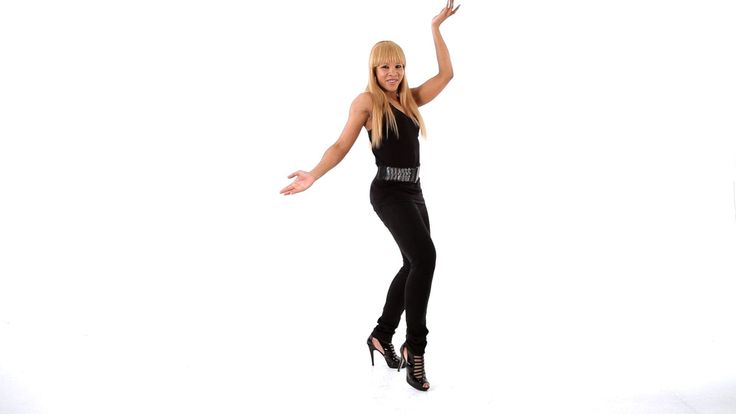 The louder the sound, the higher the level, and the stronger your hit!
The louder the sound, the higher the level, and the stronger your hit!
This technique is most commonly used to describe movement in in-betweens of pictures – the "pathway" between A and B.Here are a few ways "milking" is used
- At the end of a move, instead of "putting a period" on it, that is, ending it definitely by stopping the movement, think of it as a "..." The "dot dot dot," connoting that you're dragging out that move, to extend its pathway past "B," what would've been the stopping point without the milking.
- Or, you can milk from one picture into a completely new picture. To practice this, set 2 poses. Every 4 counts, change your position.. but here's the challenge! Use a different pathway each time, to slowwwly get your body where it needs to be.
- Think of milking as a change in acceleration (ooh, physics terms!) Really, all moves are some sort of slowing down, speeding up, or stopping.
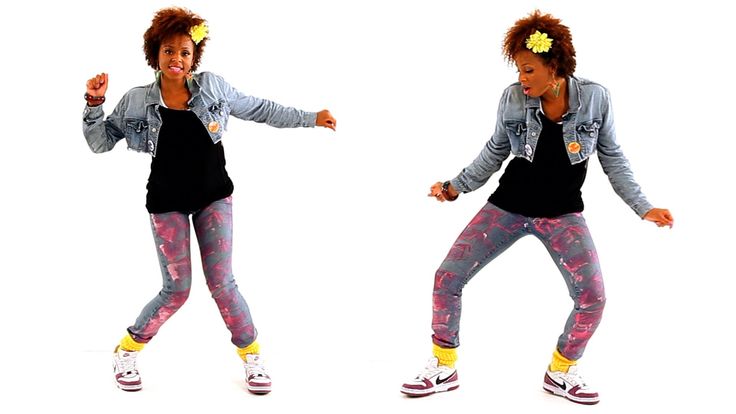 Milking is just the term for gently stepping on your brakes. Where your car goes (the pathway) is up to you.
Milking is just the term for gently stepping on your brakes. Where your car goes (the pathway) is up to you.
Learning how to manipulate your speed is going to be a huge factor in shifting dynamics and textures. To practice speed control, pretend that your arms are hitting a "wall." But instead of stopping at this wall, that wall is the checkpoint at which you change your speed. Go from fast and hard hitting, to completely "milking." This variance in speed will help switch up the mood and "textures" of a piece.
TexturesThink of textures the way you think of the physical connotation of the word. Have you ever heard dancers being described as "smooth"? They probably move like honey. Visualize the way that a song feels. Is it staccato, with abrupt starts and stops? Is it flowy and silk-like, with lots of vocals? Is it gruff and interrupted, like an angry rap song? While many songs do embody a specific "texture," most have elements of several.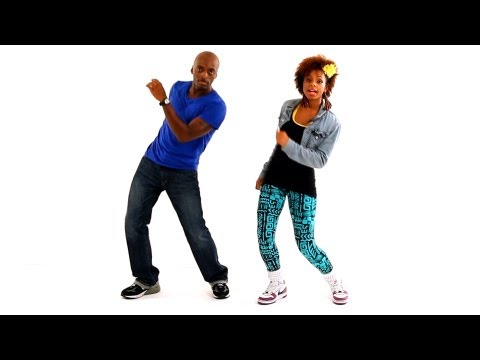 And because a lot of songs carry with them hints of different textures, the variation in your hits, milks, and speed, are all going to contribute to how you match the music.
And because a lot of songs carry with them hints of different textures, the variation in your hits, milks, and speed, are all going to contribute to how you match the music.
Part 4: Class and Training
OKAY OKAY, enough talking about how to dance hip hop – let's start practicing it already! One of the best ways to practice a skill is to... take a class!
Looking for a Hip Hop dance class in your area
If you don't have a dancer friend who can introduce you to different dance classes, it's okay! That's what the internet is for. Do a Google or Yelp search using key words like "Dance classes in ____" or "Dance studios in _____" or "Hip Hop classes in _____" or "How to dance Hip Hop in _____"
Do you live in LA? Train here: The Dance Studios In LA You Need To Be Training At
Once you have a good list of nearby dance studios, go on their websites to see what kind of class offerings they have.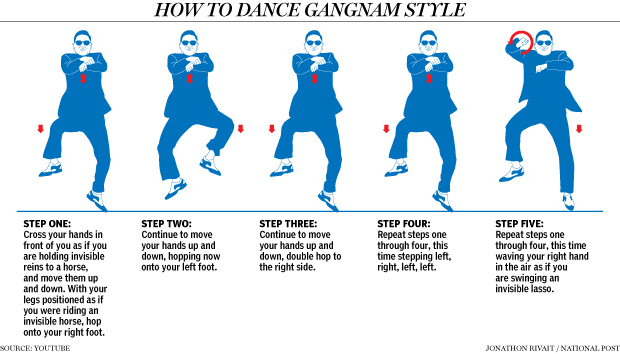 If they do not have a website, then call the studio and ask for their schedule. This way, you can ask more questions while you're on the phone, too. Instagram is is a great tool for finding dance studios and dance classes, too!If you keep noticing flyers or class videos (either in your personal feed, or through Instagram's "Explore" page), and click on the location link, you can see where the studio is located. Better yet, if the studio itself has an account, you can stalk their class schedules and instructors to find out more.
If they do not have a website, then call the studio and ask for their schedule. This way, you can ask more questions while you're on the phone, too. Instagram is is a great tool for finding dance studios and dance classes, too!If you keep noticing flyers or class videos (either in your personal feed, or through Instagram's "Explore" page), and click on the location link, you can see where the studio is located. Better yet, if the studio itself has an account, you can stalk their class schedules and instructors to find out more.
Finally, lurking skills from stalking your crush is coming in handy! If you like the instructors / classes offered, or the vibe of the studio, add that into your list of prospective places to take class at.
Which Hip Hop dance class should you take?
Once you've secured the place where you'll be taking your dance class, you need to decide which class to take. You want to make sure you feel comfortable diving into your first dance class, and that it will benefit you, rather than leave you feeling defeated.-Step-6.jpg/aid1640374-v4-728px-Shuffle-(Dance-Move)-Step-6.jpg)
A "Beginner" level dance class is probably the best to start with. Even if you're not a beginner dancer, read Why Every Dancer Should Take A Beginner Dance Class
How to prepare to take a Hip Hop dance class
Once you've decided on your dance class (where / when / which one), it's time to get ready. Choose an outfit that is loose and comfortable, but one that you still feel confident in. By no means do you have to follow the latest trends in "dancer fashion." It's about YOU and what makes YOU feel cool. Once you get to the studio, you're going to register at the front desk, pay for your "Drop-In" class, and wait for the room to be ready. There's usually back to back classes at studios, so another class will be exiting as you're waiting to enter. When you get inside, put your stuff down and wait for the choreographer.
Until then, you can just hang out, start stretching, or talk to other dancers in the class. You'll probably start to feel nervous right about now. Remember: It's all about your mindset! Take a deep breath and remind yourself that a class is called a class for a reason: you're there to learn! So instead of being intimidated by the idea of trying something new, get excited to start learning.
Remember: It's all about your mindset! Take a deep breath and remind yourself that a class is called a class for a reason: you're there to learn! So instead of being intimidated by the idea of trying something new, get excited to start learning.
What to know when you take a Hip Hop dance class
The choreographer will start (most likely) by introducing themselves, and leading a quick stretch. Aside from the actual learning process (which we'll talk about in the next section), there are a few "class etiquette" notes to keep in mind:
Ask questions
If you're struggling with a move, it's perfectly *fine (encouraged!) for you to ask questions.*However, don't do this in excess! Try and figure out the answer yourself first (by looking closer at the move, trying it out in different ways for yourself), and if you still need clarification, ask.
Switching lines
When the choreographer says to "switch lines" – if you're in the front of the room, move to the back, and vice versa.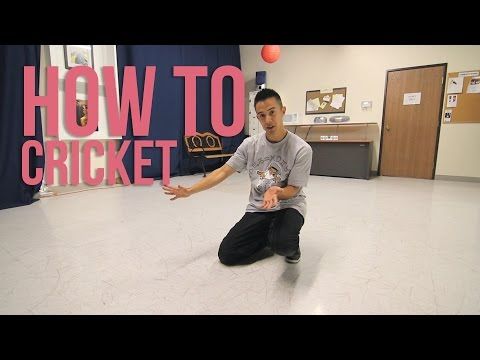 This is to ensure that everyone gets a fair chance at having a good view of the choreographer throughout the class. It'd be a little selfish to hog the mirror the whole time, right?
This is to ensure that everyone gets a fair chance at having a good view of the choreographer throughout the class. It'd be a little selfish to hog the mirror the whole time, right?
Switching inside / out
In addition to switching lines, the choreographer might also ask the class to switch "inside out" / "outside in." And yep – it's exactly as it sounds. If you're toward the middle of the room, move closer to the walls, and vice versa.In general, it's good to move around the room while you take class, regardless of whether the choreographer is telling you to or not. It helps you to not grow dependent on your position to learn or execute.
Sitting down
There are a few cases where you'll have to take a seat during the class.
1. When the choreographer is demonstrating the moves they taught and you're in the front of the room. We do this so that, when the choreographer first matches the moves to the music, everyone can see what the choreography is supposed to look like.-Step-7.jpg/aid1640374-v4-728px-Shuffle-(Dance-Move)-Step-7.jpg)
2. If the studio is too crowded, and the choreographer needs to demonstrate the choreography for the "back half" to see. It's easy to follow the choreographer if you can actually see what they're doing, but often the people in the back of the room have blocked or limited vision. (Especially when it comes to intricate details or footwork). We have the front half of the room sit down while the choreographer can teach the back half of the room, then have the whole class join in once everyone "gets" it.
What the choreographer means...
When they say to "Watch"
This is when it's polite for the people in the front of the class to take a knee/seat. Even if you know the moves, really WATCH the choreographer demonstrate the piece. While you watch, take note of where the piece counts in, the true tempo of how fast the song goes, and how the choreographer is hitting each move. The closer you pay attention, the closer you'll know what to emulate.
When they tell you to "Mark it"
Marking means that you are doing the piece more in your head than on your body – but you should still be doing it with your body.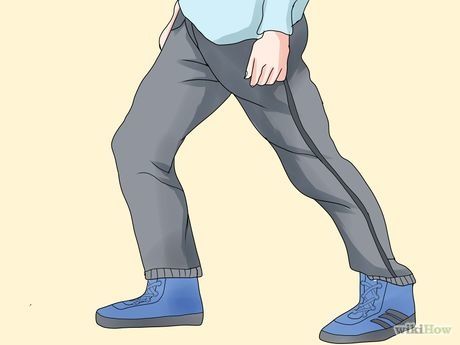 Think of it as doing the piece, but with less energy. Be more conscious of the music, timing, and where your body placements are rather than releasing your bankai. The choreographer might use percentages to indicate how much energy you should be putting into your mark. Example: "Let's go just 50% for this first run-through!" or "Mark it around 80%"
Think of it as doing the piece, but with less energy. Be more conscious of the music, timing, and where your body placements are rather than releasing your bankai. The choreographer might use percentages to indicate how much energy you should be putting into your mark. Example: "Let's go just 50% for this first run-through!" or "Mark it around 80%"
When they tell you to "Go full out"
All right, THIS is when you go 100% with your energy. Think of it as the most you can do for everything: cleanliness, timing (that you should've perfected in your mark), but now with power!
Read this for tips: How To Dance Bigger, Stronger, And More "Full Out"
How to learn when you take a Hip Hop dance class
Learning choreography
Take note of pictures, angles, footwork, focus, etc.
Scared that you'll fall behind? Use these tips for How To Keep Up In Dance Class
Choreographer's execution
WATCH them demonstrate for the class! Take note of texture, dynamics, milking, everything from their demeanor and posture to their facials and energy levels.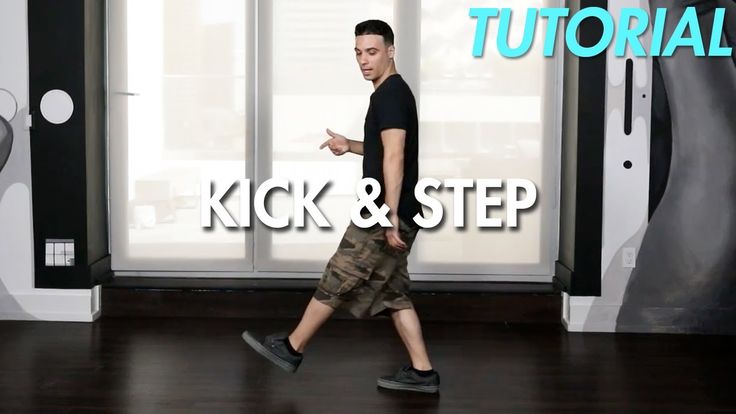
Listening to the music
A huge huge huge huge huge part of being able to get a piece is knowing the music. Know what sounds you're hitting, when those sounds come in the music, the tempo, mood, and style of the song.
Practice performance
If you're satisfied with starting out learning just the choreography, that's fine! But if you feel comfortable with the piece, try and add a little pizzazz to it! Your freestyle, your facials, your personal swag.
After you take a Hip Hop dance class
A class experience is not limited to just learning choreography. After all the moves are taught, there will be a few things the choreographer has you do.
Groups
This is when the room is divided into sections, and that group will perform the piece as the other students watch. Groups can get intimidating! But it's also an integral part to your growth. Push yourself outside of your comfort zone and just go for it!
Select group
The choreographer may or may not call out a "select group" – a group of students that they noticed and want the rest of the class to watch. The selected dancers may have been really clean, not so clean but performed the crap out of it, had a lot of personal style, or were just fun to watch. There are so many reasons you can get chosen or not for a select group, so don't overthink it!If the choreographer calls out a "any 10 people" or "any 5 people" to be in a group, and you feel comfortable with the piece, you should volunteer to go up!
The selected dancers may have been really clean, not so clean but performed the crap out of it, had a lot of personal style, or were just fun to watch. There are so many reasons you can get chosen or not for a select group, so don't overthink it!If the choreographer calls out a "any 10 people" or "any 5 people" to be in a group, and you feel comfortable with the piece, you should volunteer to go up!
Recording class footage
Don't be surprised if someone (either the studio staff, another student, or a parent) is recording you dance.The studio sometimes does this to promote their classes, and students/parents often do this for personal keeping or to post on social media.. (let's be real) And if YOU want to record yourself, ALWAYS ask the choreographer first if that's okay. If they say no, don't. Clear it with the studio staff, too. Then ask someone to record you so you can critique (or appreciate) how you did. Or post it on Instagram. Live your life.
Choreographer's solo
At the very end of the class, the choreographer will most likely perform the piece.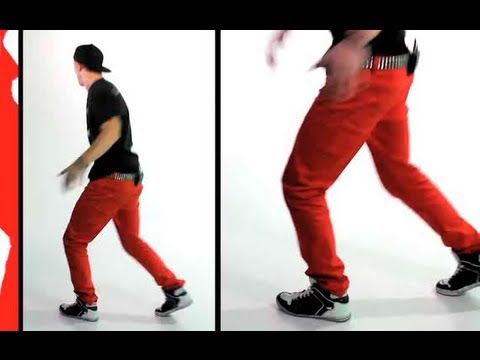 Honestly, the best thing to do here is just watch so put your phone down, and just watch!
Honestly, the best thing to do here is just watch so put your phone down, and just watch!
Saying thank you to the choreographer
Once you pick your jaw up from the dance floor, make sure to line up to thank the choreographer. They just shared their craft with you, hopefully in a way that helped you become a better dancer in some way, so it's important to show your appreciation. You can introduce yourself, say thank you, take a picture if you want. You can ask for critiques or tips, but if there is a long line of people behind you, the more polite thing to do is to keep it short and sweet. In addition, ask the choreographer for the song title and artist so you can keep practicing the piece at home!
Part 5: Setting Future Goals
So, you’ve made your first leaps into learning how to dance hip hop. Congrats! Welcome!! Yayyyyyy!!! Now, where do you go from here? Since different dancers dance for different reasons, let’s talk about 4 different goals you can set for yourself and tips to help you reach them.
How did your first class go? Was it challenging? Scary? Too easy? Just hard enough? Although your first dance class is quite a hallmark in your dance journey, but it's only one of many to come. If versatility is your goal, keep exploring different classes at different studios. Don't just take the same beginner class from the same choreographer week after week. Make a list of specific styles or choreographers you want to train under. Schedule out when and where you can take those classes, and strategize a way to get the most variety as possible. After a while, you'll be able to identify what you need extra help in. And you'll have a better sense of your own "style," based on the types of pieces you tend to enjoy most.
#2: Level up! Learn advanced choreographyIf your goal is to be able to keep up with advanced choreography, then set a hard date for the class you want to be able to take in a few months.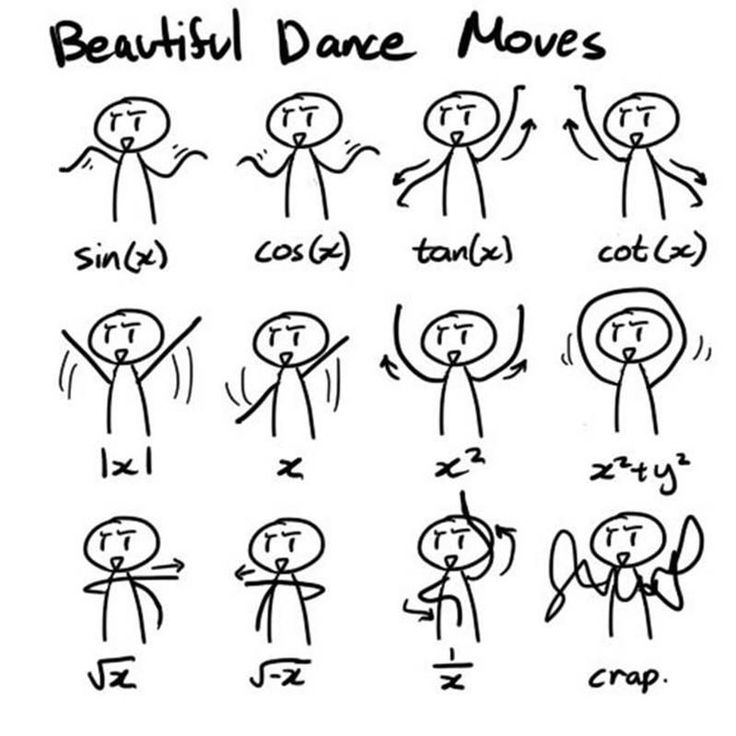 Til then, seek out classes that are more and more challenging as time goes on. From beginning classes, intermediate, to more advanced. And after you take it, don't stop there! Keep challenging yourself with advanced classes – while you continue to train as a beginner. It'll push your choreo pickup and execution, while strengthening your foundation. How To Get The Most Out Of Dance Class (Video)
Til then, seek out classes that are more and more challenging as time goes on. From beginning classes, intermediate, to more advanced. And after you take it, don't stop there! Keep challenging yourself with advanced classes – while you continue to train as a beginner. It'll push your choreo pickup and execution, while strengthening your foundation. How To Get The Most Out Of Dance Class (Video)
It's nice to have a tribe of support for something that started as a personal journey. So if you want to get to know your fellow dancers – take initiative! Introduce yourself to the familiar faces you see in class. Definitely introduce yourself to the studio staff. Be vocal in classes, and ask other dancers where they're from / where they're going. Not only that, attend dance shows, competitions, battles, and even team fundraisers. These events spur a lot of conversations, and give you a better vibe (aye) for what the culture is all about.
STEEZY Studio members connect with each other through our Facebook group – where we share videos, ask for tips, give critiques, and even arrange meet-ups!
See related articles: How To Thrive In A New Dance Community
How To Build A Network In The Dance Community
#4: Audition for a hip hop dance teamLots of us start dancing after watching a team perform. Whether it was on YouTube, or in person, these sets stirred something in us that pushed us to try it out. Consequently, a lot of dancers' goals are to perform with a team, on a stage, at a show or competition. If making it on to a team is your goal – and even if it isn't! – then auditioning is a great experience that can teach you a lot of things. It's going to call on you to pick up choreo quickly, in a crowded room, surrounded by other hungry dancers. You'll have to perform for a panel of judges, and maybe even freestyle.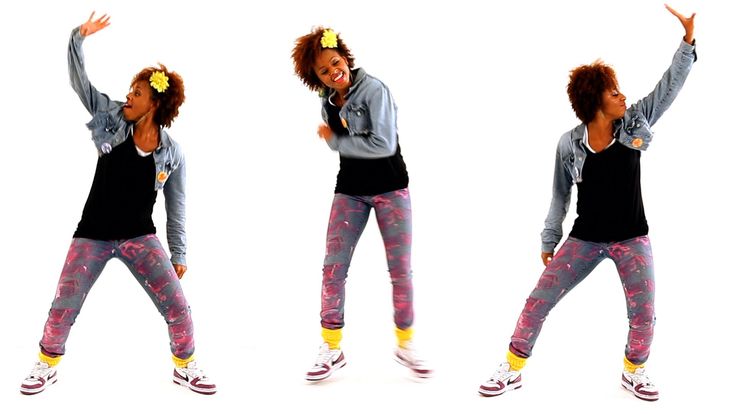
The pressure might get nerve-wracking, but that's exactly why that experience is so valuable. Auditioning for a hip hop dance team will really test where you are as a dancer, in addition to being another great opportunity to train and meet people. Look into the dance teams in your area. Ask about auditions or private / mid year auditions if you missed the start of the season. Even if you don't end up joining right away, it's great for the psyche to have a clear goal to aspire to.
See related articles: How To Make Your Dream Dance Team
We hope this helped you newer dancers learn how to dance hip hop! Welcome, and we can't wait to share this journey with you!
promposals, sick dance moves, and guitars rock the stands – Bulldog Times
- News
Ian Gonzalez
May 11, 2022
Time goes by fast. With only a month left in the school year, the last rally of the year was held on April 29th. Meaning that this was the last rally for the Class of 2022. Usually rally days are regarded as a day that students can be celebrated for their academic accomplishments and sport accomplishments, but this last rally was considered the Senior Rally.
Meaning that this was the last rally for the Class of 2022. Usually rally days are regarded as a day that students can be celebrated for their academic accomplishments and sport accomplishments, but this last rally was considered the Senior Rally.
A last send-off for the seniors. The last Bulldog chant, the last class competition, and the last chance for our seniors to be recognized for their achievements. This rally was eventful with different performances and even a promposal to top it off.
Senior David Gorsage spilled his heart out on the field as he sang a rendition of Frankie Valli and the Four Seasons hit song, “Can’t Take My Eyes Off You.”
“I chose ‘Can’t Take My Eyes Off You’ because it was the same song that Heath Ledger’s character sings in his promposal in Ten Things I Hate About You, and I also think it fits my voice,” said Gorsage. “This idea has been brewing for a while, since in my freshman year Sydney sent in a group chat that I was in a video of the promposal from Ten Things I Hate About You.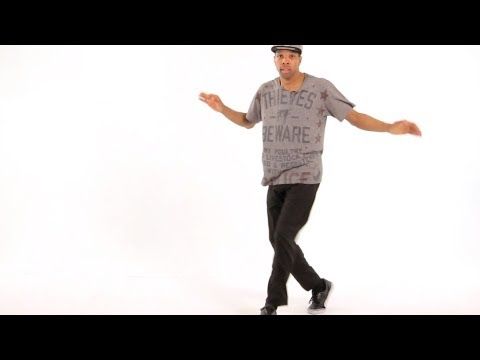 And that’s kind of been a part of my subconscious for a while.”
And that’s kind of been a part of my subconscious for a while.”
“I really wanted to do it for the last senior rally because I wanted to do something that would make Sydney feel really special, and also something that people would remember,” Gorsage said.
This year, a new performer willingly took to the field for the first time. Junior Gabriel Senoren was able to show the school his jaw dropping musical talents.
“I wanted to perform and show off my talent to most of my friends in school,” said Senoren. “It means a lot because you know my talent is rare because playing guitar in front of the school takes a lot of courage as well. I wanted to show the whole school that old music still rocks to this day.” His performance would end with a round of applause from the crowd.
It has become a tradition for Senior Lyle Tiu to perform at the rally. Sadly, this would be his last performance.
“Performing at rallies was a great way for me to build confidence, as well as have fun and show a talent I don’t usually use,” said Tiu.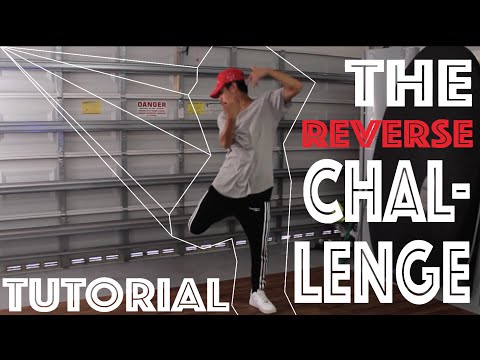 Performing always had a deeper meaning to Tiu than just the attention. “Performing is a way for me to create art or style in the moment, and I love the energy it brings when I feel the rush of music flow through.”
Performing always had a deeper meaning to Tiu than just the attention. “Performing is a way for me to create art or style in the moment, and I love the energy it brings when I feel the rush of music flow through.”
Tiu’s last performance was surely a show stopper. “I wanted to end my time performing at rallies on a big note, so being able to go for a style I’m not as comfortable with really made me give my all, so overall it was everything I could’ve asked for.”
What a way to end on a high note for the the last rally of the year. With many different performances including one from Polynesian Club, this was the perfect way to send seniors off on their next adventure.
$100
$500
Contributed
Our Goal
Your donation will support the student journalists of Ruben S. Ayala High School's Bulldog Times. Your contribution will allow us to cover our annual website hosting costs and purchase equipment.
About the Contributor
Ian Gonzalez, Staff Writer
Ian Gonzalez does not participate in any extracurricular activities. Ian loves to watch movies and T.V. shows in his free time. He plans to create news...
Ian loves to watch movies and T.V. shows in his free time. He plans to create news...
7 tips for those who want to learn how to dance
September 9, 2020Reno5Life
Dancing is a great way to make friends with your body and gain self-confidence. And yes, they can be mastered at any age.
Share
01. Choose your style
The idea here is the same as with sports: if you secretly hate yoga or iron exercises, you are unlikely to go to workouts week after week. To achieve noticeable progress in dancing, a beginner will have to practice a lot and regularly, so it’s better not to torture yourself and choose a direction that really ignites.
You can focus on the music that you like - you need to catch the drive from movements to it. It is music that forms the style of dance and its energy, so decide what is closer to you: for example, funk lovers should try popping or locking, folk fans may like Irish dancing, and if you respect jazz, swing and everything like that, take a closer look at lindy hop.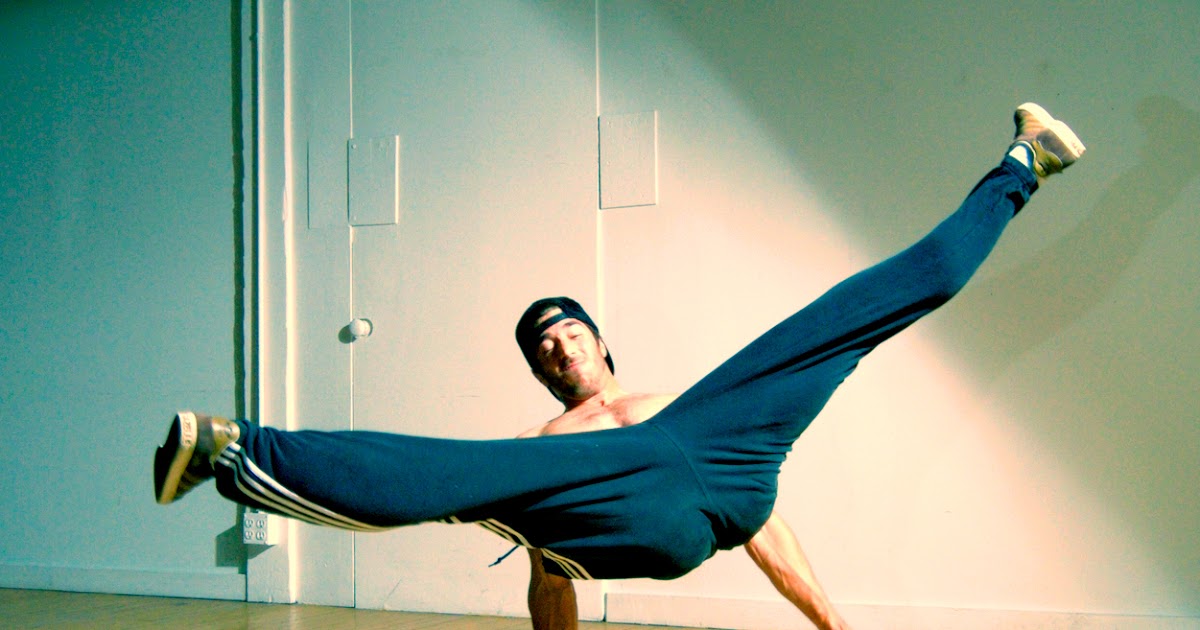
Another criterion is the nature of the movements. Some are closer to dynamic, as in hip-hop, others are smooth and sensual - for this in tango. There are also health restrictions to consider. So, twerk is not suitable if there are problems with the lumbar spine, with sore knees it is better not to get involved in shuffle, and it will be difficult for an aged person to master house.
2. Set a goal
Photo: Iakov Filimonov / ShutterstockYou can start dancing at any age, but it's important to keep in mind why you started it in the first place. It is perhaps too bold to expect that in half a year of classes it will be possible to reach the level of international dance championships from scratch. But if you want to try dancing in order to develop plasticity and learn to feel the body better, great, go ahead.
Don't expect everything to work out the first time. When you learn from scratch, difficulties are absolutely normal, the main thing is not to score in classes. Over time, both the correct posture and a beautiful gait will be developed, and as a bonus you will also get self-confidence - with freedom of movement, freedom from complexes will come.
Over time, both the correct posture and a beautiful gait will be developed, and as a bonus you will also get self-confidence - with freedom of movement, freedom from complexes will come.
3. Don't forget about sports
Some dances in themselves make for a good workout. A vigorous shuffle will replace cardio, and a break can give a load to almost all muscle groups. And yet, without preparation, it will not be easy. A more or less good stretch is needed in any type of dance, and, for example, strong arms and strong abdominal and back muscles are also useful for pole dancing. You can combine dancing with strength exercises, but you need to give the body time to recover and not plan classes in a row, but allocate at least a day of rest between them.
And don't forget to warm up before dancing. So that the training does not end with an injury, the muscles and joints need to be prepared for the load. You can allocate 10–15 minutes for a warm-up, it should include simple articular gymnastics (at least elementary rotational movements of the shoulders and knees), tilts and dynamic stretching.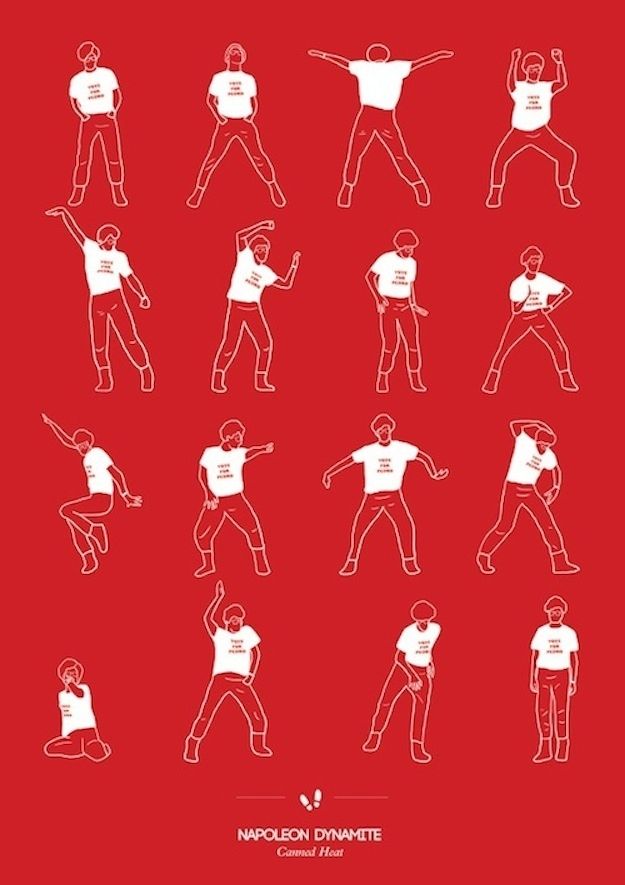
4. Take some lessons from a trainer
Especially if you have never danced before. Those with experience can learn new styles at home with video tutorials, but that's because they already know how to control their bodies. Beginners are unlikely to succeed, but disappointment in themselves and demotivation are guaranteed - if you can’t repeat elementary movements, then there’s no point in doing it.
Nothing really strange here. Without preparation, it is difficult to just take it and start moving freely. At least the basic elements are better to master under the guidance of a pro, and when you feel that you are coping, supplement these lessons with home workouts.
5. Learn something new in every class
When you repeat the same set of exercises and movements over and over again, classes turn into a good way to pass your free time, only you can forget about progress. Acquaintance with new elements is the same mandatory part of any workout as a warm-up.-Step-18.jpg/aid1640374-v4-728px-Shuffle-(Dance-Move)-Step-18.jpg) It doesn't matter if you work with a mentor or on your own.
It doesn't matter if you work with a mentor or on your own.
Do not immediately try to copy cool dancers. First, study the basic movements, then try to combine them into bundles until you hone them to automatism, and then experiment and improvise, creating something new based on familiar elements.
6. Record yourself on video
You don't need to record the whole workout from the warm-up on, it's enough to record only those moments with which you have problems. These can be separate movements or bundles that are not given in any way. Review the video and, if possible, objectively assess what is wrong: perhaps there are technical problems that are difficult to notice in the process. When you understand what's wrong, try to repeat the movement and record it on video again - and so on until you achieve a good result.
This approach will help you find errors and track progress. You can not even limit yourself to memorized ligaments, but improvise - then see how it looks from the outside.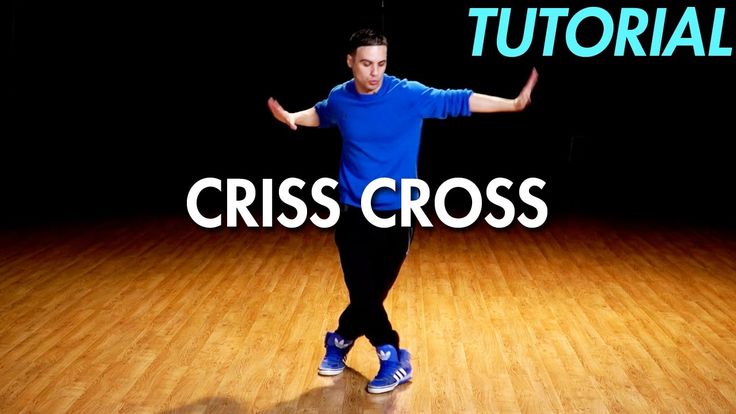
7. Find like-minded people
Photo: Iakov Filimonov / ShutterstockIf you need an extra reason not to miss classes, then meeting new people can be a good motivation. It is easier here for those who train in a group. Often the dance school becomes the center of a close-knit community, where people come not only for the sake of classes, but also just to spend time together at dance parties.
Finally, the more partners around, the more experience. Do not limit yourself to dancers of your level of training and practice with those who are stronger or weaker than you. In the first case, you will be able to improve your skills, and in the second, you will try yourself as a coach - this, by the way, is a good way to learn to take more initiative and understand the very principle of movement in dance, and not just memorize the alternation of chords.
Stay fit and connected with the OPPO Watch. They have two powerful processors, a bright AMOLED display, 1 GB of RAM and 8 GB of internal memory, Bluetooth, Wi-Fi and NFC modules. And more than 90 training modes, including those designed specifically for ORRO. Work out cooler with music, you can listen to it in streaming services or download tracks to the memory of your watch.
And more than 90 training modes, including those designed specifically for ORRO. Work out cooler with music, you can listen to it in streaming services or download tracks to the memory of your watch.
If you want to enjoy clear sound, the OPPO ENCO W31 Wireless Headphones are for you. Two-level noise reduction system, easy operation and stable connection will make listening to music and talking on the phone as comfortable as possible.
Show smart watch and headphones!Read also 🧐
- How to learn how to dance the shuffle
- How to learn street dancing without leaving your home
- Zumba is a fun way to lose weight for those who love dancing
Dance Technique
Adama Sevani, better known as Robert Alexander III from the Step Up dance franchise once said, “Dance can change lives. One move can set a whole generation free, make you think you're worth something, and some moves can give you hope that you're special." Is it really necessary to go through several stages of research.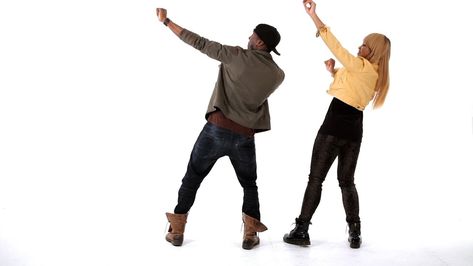 To begin with, it is necessary to find out what a dance is, then to analyze the stages of evolution, only at the end to conclude what a dance really is. Let's start with a historical background: “Dance is rhythmic, expressive body movements, usually built into a certain composition and performed with musical accompaniment. Dance is the oldest of the arts, since it is able to reflect the need of a person, dating back to the earliest times, to convey to other people their joy or sorrow through their body. All important events in the life of a primitive man were celebrated with dances: birth, death, war, the election of a new leader, the healing of the sick. The dance expressed prayers for rain, for sunlight, for fertility, for protection and forgiveness. Dance movements originate from the basic forms of human movement - walking, running, jumping, bouncing, jumping, sliding, turning and swinging. The totality of such movements gradually turned into the “pas” of traditional dances. The main parameters of the dance are rhythm - a relatively fast or relatively slow repetition and modification of basic movements; drawing - a set of movements in the composition; dynamics - variation in the scope and intensity of movements; technique - the level of body control and skill in performing basic steps.
To begin with, it is necessary to find out what a dance is, then to analyze the stages of evolution, only at the end to conclude what a dance really is. Let's start with a historical background: “Dance is rhythmic, expressive body movements, usually built into a certain composition and performed with musical accompaniment. Dance is the oldest of the arts, since it is able to reflect the need of a person, dating back to the earliest times, to convey to other people their joy or sorrow through their body. All important events in the life of a primitive man were celebrated with dances: birth, death, war, the election of a new leader, the healing of the sick. The dance expressed prayers for rain, for sunlight, for fertility, for protection and forgiveness. Dance movements originate from the basic forms of human movement - walking, running, jumping, bouncing, jumping, sliding, turning and swinging. The totality of such movements gradually turned into the “pas” of traditional dances. The main parameters of the dance are rhythm - a relatively fast or relatively slow repetition and modification of basic movements; drawing - a set of movements in the composition; dynamics - variation in the scope and intensity of movements; technique - the level of body control and skill in performing basic steps. In many dances, gestures are also important, especially hand movements. The dance has different means of expression, namely: harmonious movements and postures, plasticity and facial expressions, dynamics "variation of the scope and intensity of movements", amplitude, tempo and rhythm of movement, spatial pattern, composition, costume and props.
In many dances, gestures are also important, especially hand movements. The dance has different means of expression, namely: harmonious movements and postures, plasticity and facial expressions, dynamics "variation of the scope and intensity of movements", amplitude, tempo and rhythm of movement, spatial pattern, composition, costume and props.
Mastering dance skills is closely related to the activation of attention, thinking, memory, the formation of self-control, ways of developing a sense of rhythm and tact. In the process of learning to dance, it is possible and necessary to use improvisation (when dancers invent movements directly during the performance), broken movements.
For those who have never been involved in dancing, the above will remain ordinary words, a little familiar, but still, words. For everyone else who is even a little connected with dancing, each word has its own separate meaning. However, do not forget that emotions also depend on the plot of the dance.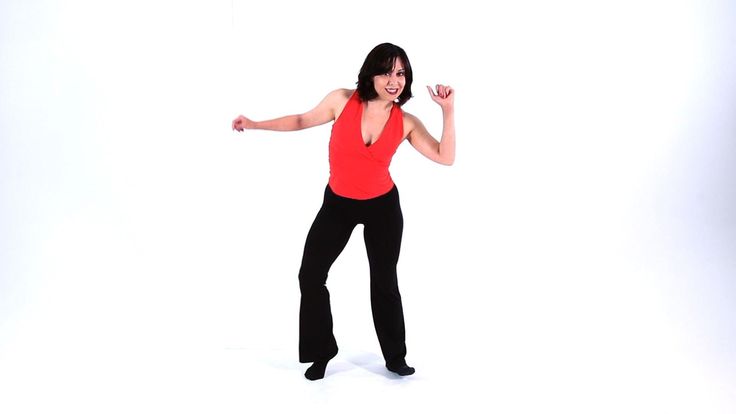 The dancer can be of any height and weight, during the classes the inner world is revealed through a kind of dance technique: expressiveness of movements, gestures, facial expressions, postures, understanding one’s body in space and understanding the work of muscle groups, glorifying the beauty and harmony of the human body, sentimentally gentle manifestations . The reason for the success of the performance lies in the high technique of movements, which leads to coherence, lightness, ease and expressiveness of the dance performance. Under the technique of performing dance movements is understood the ability to correctly and accurately perform dance movements. “The content and depth of a choreographic work can be accurately revealed only with the help of an accurate performing technique of dance. Where there is no precisely developed dance technique, there can be no true art,” says N. Tarasov, an outstanding choreographer and teacher. Any choreographic work, that is, a dance, consists of movements, each of which, in turn, consists of several elements.
The dancer can be of any height and weight, during the classes the inner world is revealed through a kind of dance technique: expressiveness of movements, gestures, facial expressions, postures, understanding one’s body in space and understanding the work of muscle groups, glorifying the beauty and harmony of the human body, sentimentally gentle manifestations . The reason for the success of the performance lies in the high technique of movements, which leads to coherence, lightness, ease and expressiveness of the dance performance. Under the technique of performing dance movements is understood the ability to correctly and accurately perform dance movements. “The content and depth of a choreographic work can be accurately revealed only with the help of an accurate performing technique of dance. Where there is no precisely developed dance technique, there can be no true art,” says N. Tarasov, an outstanding choreographer and teacher. Any choreographic work, that is, a dance, consists of movements, each of which, in turn, consists of several elements. Each genre of choreography, whether it be classical, folk or modern dance, has its own set of basic elements and movements, created over many centuries of the existence of dance art. With the help of these movements, complemented by gestures and facial expressions, dance performers convey to the viewer not only the thoughts, feelings, experiences of the characters, but also the very content of the dance work. No matter how different the movements of dances of different genres are from each other, they will not only affect the viewer if they are performed technically, that is, competently and accurately. “Precision is not a template, not simple professional pedantry, but a lively sense of dance, which determines the perfection of performing skills. Accuracy allows the dancer to acquire plastic harmony, self-confidence, and creative activity. The concept of "near", "near", "approximately" is not compatible with the dance technique. The slightest rhythmic and plastic inaccuracy indicates that the performer does not have mastery,” writes N.
Each genre of choreography, whether it be classical, folk or modern dance, has its own set of basic elements and movements, created over many centuries of the existence of dance art. With the help of these movements, complemented by gestures and facial expressions, dance performers convey to the viewer not only the thoughts, feelings, experiences of the characters, but also the very content of the dance work. No matter how different the movements of dances of different genres are from each other, they will not only affect the viewer if they are performed technically, that is, competently and accurately. “Precision is not a template, not simple professional pedantry, but a lively sense of dance, which determines the perfection of performing skills. Accuracy allows the dancer to acquire plastic harmony, self-confidence, and creative activity. The concept of "near", "near", "approximately" is not compatible with the dance technique. The slightest rhythmic and plastic inaccuracy indicates that the performer does not have mastery,” writes N.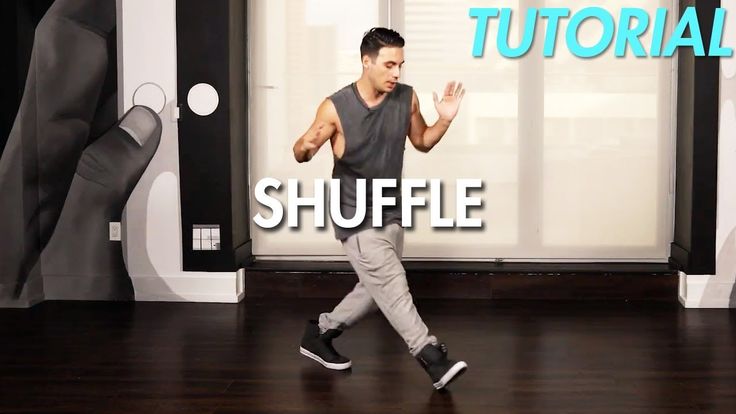 Tarasov. That is why, teaching children to dance, developing performance qualities, it is necessary from their first steps in choreography to form the ability to accurately and correctly perform all dance movements.
Tarasov. That is why, teaching children to dance, developing performance qualities, it is necessary from their first steps in choreography to form the ability to accurately and correctly perform all dance movements.
The driving force behind all this is the desire of the dancer to be different from others, and the absence of strict norms allows you to observe the only rule - everyone has the right to individuality. High dance technique does not appear on its own, it is formed gradually, from lesson to lesson for several years, and along with it the mastery of performance grows. The technique of movements depends on the preparedness of the entire motor apparatus of the trainees, on the training and education of the entire body of the child - muscles, psyche, nervous system. Work on performing technique begins at a young age with the setting of the body, training of individual muscle groups and the entire body of the pupils, the formation of the simplest skills of various movements in them.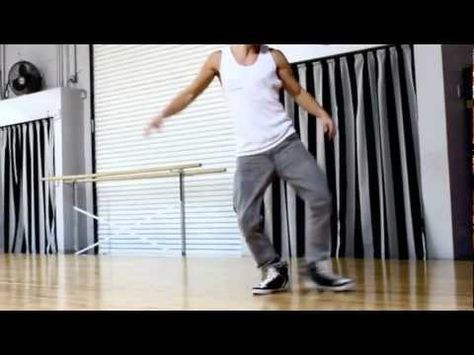 This is achieved by performing exercises for various parts of the body: legs, arms, head, body - and each of these exercises is performed according to certain rules. The firm conviction of the majority of outstanding choreographers that only a school of classical dance is able to develop a high dance technique among students.
This is achieved by performing exercises for various parts of the body: legs, arms, head, body - and each of these exercises is performed according to certain rules. The firm conviction of the majority of outstanding choreographers that only a school of classical dance is able to develop a high dance technique among students.
The school of classical dance, which has a huge range of technical and expressive means, is the basis used by performers of all genres of stage choreography. “All genres of stage choreography use, to one degree or another, the performing technique of classical dance, which helps to achieve a higher and more perfect performance level,” N. Tarasov interprets.
Thus, in the educational work on mastering the art of dance, it is necessary to use the system of classical dance in order to form in children the skills of performing dance elements and movements. But, most importantly, this system of exercises helps to strengthen muscles, posture, develop such qualities as stability, flexibility and other indicators of the dancers' physical readiness for learning and performing dance.

